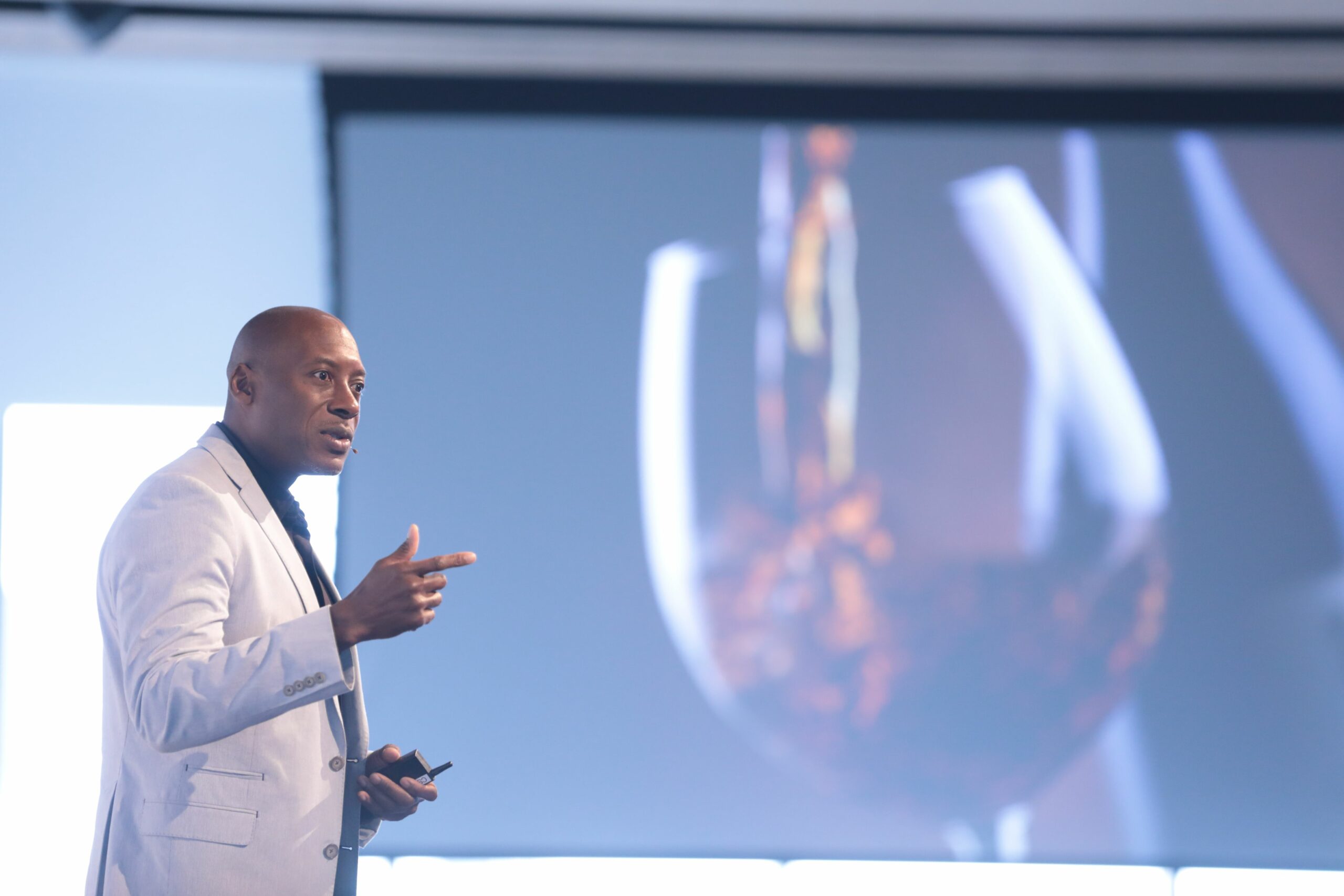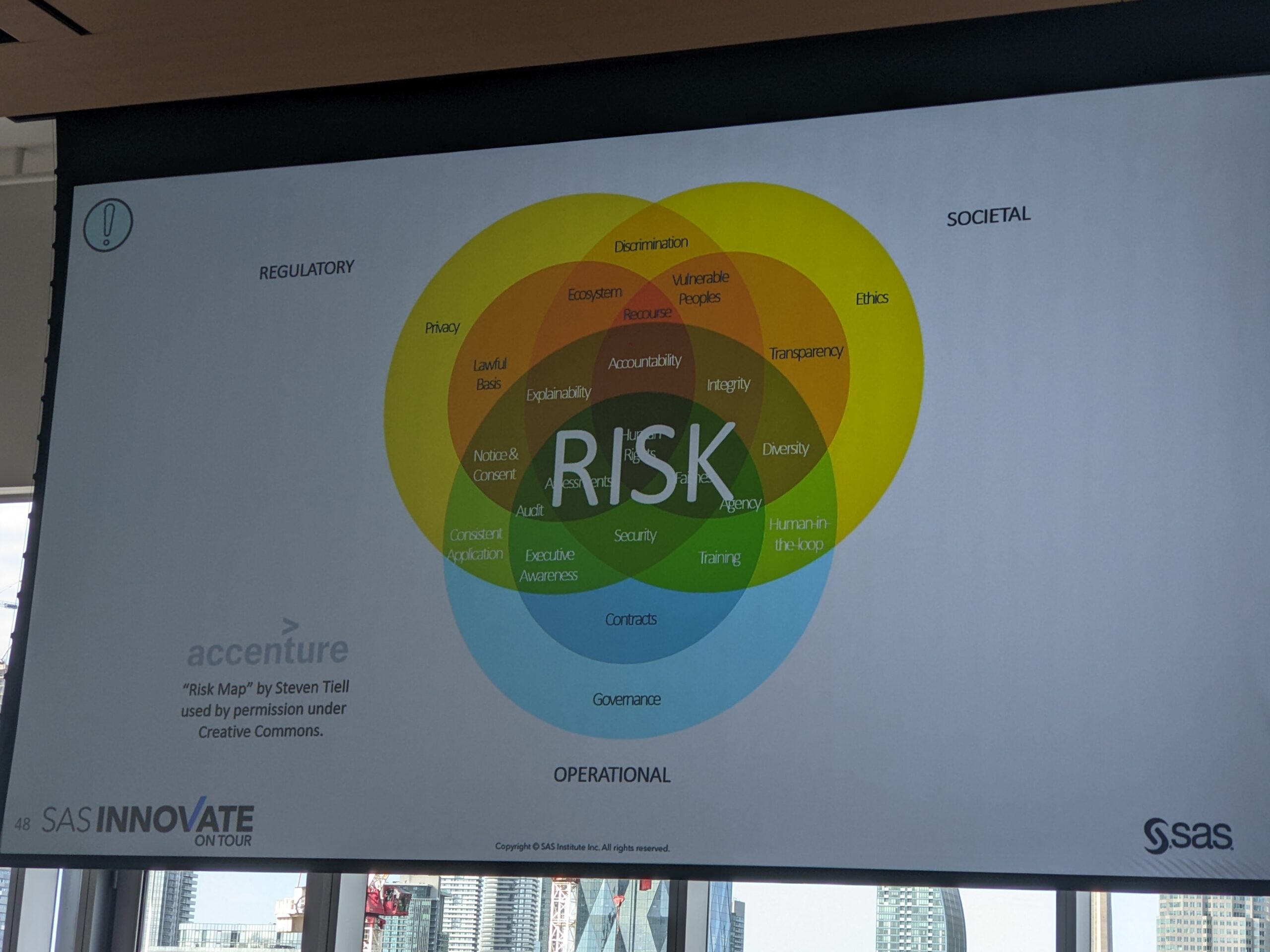At the SAS Innovate Roadshow, held in Toronto on Sept. 8, 2022, Reggie Townsend, director of AI Ethics at SAS, compared artificial intelligence’s (AI’s) risks and rewards to that of wine. And just like wine, Townsend said you can’t talk about AI without talking about its risks and rewards.

“In the world of AI, we can switch to a business context and say…every business decision has risk and reward, every technology has risk and reward, AI is no different,” he said. “So we should accept that. It is just like every other potential instrument that will be introduced.”
He outlined four key data ethics practices organizations need to keep in mind when implementing their AI strategies:
- Using best practices, methods, tools and collaboration
- Standardizing data ethics norms
- Minimizing risk and harm to vulnerable populations
- Consistent, coordinated approach globally
Townsend explained that while the world may never agree on one AI ethics standard, total agreement isn’t needed as long as there’s sufficient harmony. Interoperability between systems and standards are crucial in establishing trust for a complex, nebulous system that’s now creating a significant impact in our lives.
“Without that trust, I submit, our societies will fracture. Unfortunately, we’re starting to see that in stark realities right now,” said Townsend.
Despite its already-enormous applications, the industry has just begun laying the foundation for AI. It isn’t even close to realizing its full potential. And because it’s still in its infancy, what’s developed today can have devastating consequences when newer technologies use it as building blocks.
And although most organizations aim to do no harm, unintended harm is inevitable despite their best intentions. And when these harms accumulate, they can result in a massive impact.

“You have to think about this as a complex of systems all connected. And so when you think about it in that aspect, and this idea of risk also overlays with [other] systems of a system. so as a consequence, if you pull on one string, one side, you inadvertently tug on the other side.“
Organizations will incur financial penalties if they’re non-compliant with regulations — Townsend pointed out that today, around four to six per cent of revenue will sink into penalties for non-compliance with privacy regulations alone. The real damage, however, comes as cracks in their reputation and image in their customers’ eyes. For some, the loss of trust may never be recovered.
Looking on the brighter side, Townsend emphasized that organizations should not be discouraged by AI’s risks. It presents vast opportunities to enhance and improve people’s lives.
“What I do not want you to do is have a conversation about AI that’s all about doom and gloom. My opinion is that we have far too much of that right now,” he said. “On the flip side, there are the rewards to AI.”
The trends reflected in industry statistics certainly support the sentiments shared at the presentation. From financial to healthcare, from transportation to logistics, AI-based solutions are rooted in every industry. PWC predicts that AI will fully converge with the cloud in 2022, hitting a giant milestone that paves way for greater insights, especially with data. It will forecast, predict, simulate and control even more.
And organizations are actively capitalizing on this opportunity by increasing investments in technology to stay ahead, especially in AI. According to CompTIA, 86 per cent of chief executive officers believe AI to be a mainstream technology, and 91.5 per cent of leading businesses consider AI a key investment area. Consumers also appear to be embracing AI, TechJury reported that in 2020, 50 per cent of searches were done using voice commands powered by natural language processing in smartphones.
Touching on the risks of AI, Townsend said organizations can build it to be more supportive of their users’ wellbeing, not destructive.
“I’ll say this: profit doesn’t always have to come at the expense of people. I think there’s something instructive about today, and the possibilities that AI technologies present to us that allow us to now begin to think and, perhaps even reimagine, some of the structures that exist around us today and figure out how we can make those structures more equitable, more inclusive–and not at the expense of people.”
Townsend pointed out that only 40 per cent of software companies have completed their transformation journey, the remaining 60 per cent are still in the middle or just beginning. While it’s clear that ethics and privacy should be baked into their progress, the multifaceted, dynamic nature of compliance presents an evolving challenge to any organization.
So how should they begin their strategy? Townsend says there’s no silver bullet approach; every industry, and even organizations within those industries, needs to chart its own path.
“You really have to look at the context to see what it is that you’re trying to achieve. And then determine what level of risk you may incur,” said Townsend. “Every individual and certainly every company has a different risk profile. Some people may decide to accept certain risks that others wouldn’t. Some may be able to defer the risks.”
Townsend then delved deeper into the granular aspects of an organization’s functions.
“If I’m heading finance or heading marketing, I may have a different set of resources that I would go to to help me assess risk for the way I pursue brand building versus risk,” he said.
In the end, AI is and will be a complementary technology.
“It’s not the apocalypse, nor is it nirvana,” Townsend underscored. “The reality is that it sits somewhere in the middle. And our challenge…is to figure out how to use this stuff now for our day, to figure out how to put our next generation in place to be able to take advantage of it and run their leg of the race.”
